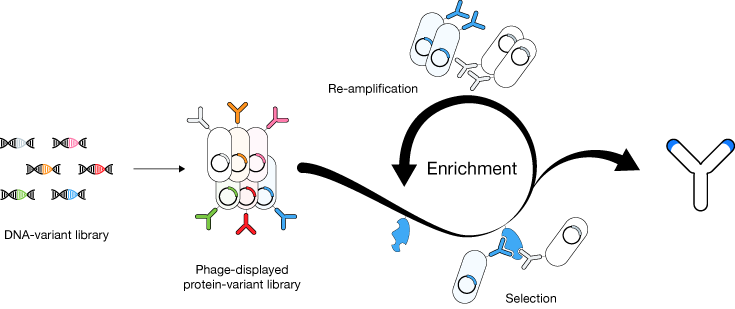Display Technologies
Our Ambition
We are committed to improving established display technologies by applying recent scientific advances such as next-generation sequencing, artificial intelligence, and state-of-the-art DNA synthesis to develop sophisticated in vitro evolution platforms. By tailoring the display system and selection process to the specific needs of a project, we aim to increase the likelihood that selected variants will be fit for purpose.

The Context
Looking for a needle in a haystack. This is what the immune system does every time we encounter a new pathogen. It searches for the appropriate antibody from the vast repertoire of B cells and improves its properties by affinity maturation on the fly. The B-cell repertoire as a natural display system has inspired the development of several in vitro display technologies in recent decades. Phage display is one of the most widely used technologies, whose inventors, George P. Smith and Sir Gregory P. Winter, were awarded the 2018 Nobel Prize in Chemistry.
Challenges
The main challenges for in vitro display systems are i) the design and synthesis of variant libraries, ii) establishing a physical link between genotype (the DNA blueprint) and phenotype (the desired trait), and iii) developing an appropriate selection strategy to enrich variants with the desired traits.
Our Approach
In phage display, these challenges are addressed by genetically fusing a DNA variant library with a phage coat protein. The resulting phage particles present the variants on their surface while encapsulating the DNA blueprint (phenotype-genotype coupling). Variants carrying the desired trait (e.g., binding to a specific antigen) are enriched by subjecting the phage libraries to subsequent rounds of selection and re-amplification. Because of the linkage between phenotype and genotype, we can easily identify the selected variants by sequencing the genome of the enriched phage particles. By incorporating recent developments in research technologies into all steps from library generation to selection, we will further tailor these processes to individual projects, increasing the quality of the selected variants in the desired context.

